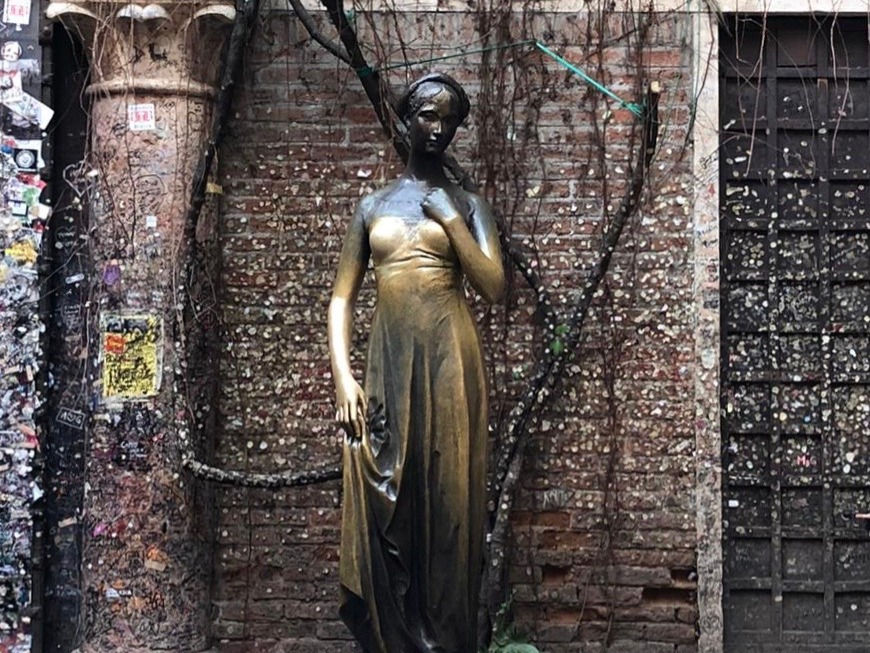
VERONA
The history of Verona
1 ARENA
It’s the third biggest Roman theatre in Italy, and one of its most recognizable symbols. Since ancient times it hosts performances and entertainment shows. Incredible opera theatre, but also forum of concerts and fashion shows. A lot of world-famous people exhibited here, and considered it a honor and pleasure performing in the Arena.




2 CASTELVECCHIO




Castelvecchio is a medieval castel which used to appertain to the Scaligeri family. It is built in bricks and its construction was ordered by Cangrande II in 1354. It is one of the most important cultural and artistic sites of Europe.
3 JULIET'S HOUSE
Giulietta’s house is a medieval lodging situated in the center of Verona, a few meters away from Piazza Erbe. This tower-house was built between 1200 and 1300. Known internationally as the house of the Capulets family, mentioned in Shakespeare’s most known masterpiece: Romeo and Juliet.




4 ST. ANASTASIA CATHEDRAL
St.Anastasia’s cathedral was built in the 13th century, in gothic style, on the basis of an ancient church (previously built). It is a very important catholic place of cult, consecrated in 147




5 ROMAN THEATRE
Built in the 1st century B.C., the Roman Theatre is situated at the foot of San Pietro's Hill, in the northern part of the ancient Roman city. It is one of the best preserved ancient theatres in the north of Italy. During Medieval times the theatre was damaged by floods and earthquakes, and many constructors built houses and monasteries on it and in the surroundings. In the 19th century the merchant Andrea Monga, who loved archeology, decided to finance the excavations to recover the theatre.








6 CASTEL SAN PIETRO
On the back of the Roman Theatre is situated San Pietro’s hill, characterized by a breathtaking view on the city of Verona. On top of the hill there is a military barrack dating back to the 19th century, built by Austrian soldiers. During the Roman times this hill was called “Monte Gallo” (Mount Rooster) and represented a fundamental religious symbol thanks to the Roman temple built on its side.
7 GIARDINO GIUSTI
It is the only 16th century Garden in Verona. Here, you can admire flower collections, Roman ruins and a majestic street that crosses the garden with cypresses on both sides. In addition, you can walk one of the most antique labyrinths of Europe and one of the few in Veneto.




8 SANCTUARY
The Sanctuary is dedicated to Our Lady of Lourdes and was built in 1908. Unfortunately, during the Second World War, the bombings destroyed completely the building. Years after, the beautiful Sanctuary was rebuilt.



